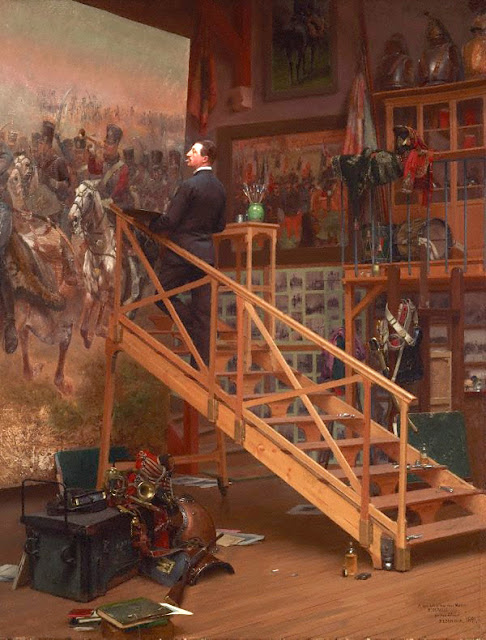Longtime readers of this blog may recall a
post way back in 2011 where I pointed out that there is no book on the history of illustration, and there ought to be one. It's such a big topic that no one dared to attempt it before.
Since then, a team of college professors, museum curators, illustrators, collectors, and historians divided up the gigantic task of writing one. There were long debates in group emails about how to define illustration, and how far back to take the story. Should non-western image-making traditions be included? Who would write about them? How much academic theory should there be, compared to biographical detail or stylistic analysis? Should the book be lavishly illustrated, or should the pictures exist in a digital supplement to the printed book?
The team opted to define illustration broadly as 'visual communication through pictorial means,' and they decided to encompass a vast scope of history, from cave paintings to the digital age, as well as a worldwide geographic reach.

I was skeptical at first that such a wide-angle approach to the topic was even possible, given the risk of skimming too lightly over the universe of information. I was also worried that it would narrow the coverage on any given subject (such as Golden Age American illustration) to such brief coverage that it wouldn't be deep enough. I was also frankly dubious about a book led by academics, who often obscure a topic by burdening straightforward facts with political agendas.

But I think they largely avoided those pitfalls and came up with a book that's authoritative, encompassing, and yet still accessible, with something to satisfy the eye and the mind of almost any reader.
History of Illustration is a monumental survey of the art of the visual communicator. It's a good thing that the book is tailored for college classes, because professors can assign it for a variety of visual studies classes, and illustration majors can at last have a printed history of their own vocation. The book is also a must-buy for libraries, since it fills a very large gap. For aficionados, it's a celebration of visual culture in all its variety. There's no other book like it.

There are forty-nine contributors, each an expert on their topic. Each is given a chance to explore his or her subject in a series of deep-dive chapters and spotlight articles. For example, Illustration historian Alice Carter oversees the chapter about "British Fantasy and Children's Book Illustration, 1650-1920" and David M. Mazierski, an expert in biomedical communication, writes a section about "Medical Illustration after Gray's Anatomy: 1859 to the present."

The book looks at the illustrator's work in pre-print cultures, not only in Europe, but in China, India, Latin America, and Africa. After the development of print, literacy, and mass media, illustration reached with a wide audience, and the authors chronicle the rise of the illustrated magazines, the children's picture books, wartime propaganda posters, popular and pulp magazines, and underground comix.
History of Illustration is published by Bloomsbury, a leading textbook publisher. There are 870 illustrations, mostly printed quarter-page size and in color. The book comes as a hardcover, softcover, and e-book, 554 pages, 9 x 12 inches, and it's priced at around $200 for the hardback and $90 for the softcover, which is par for the course as textbooks go, but a high price for art students and general readers.
----
History of Illustration, 554 pages, 870 illustrations, 9 x 12 inches, full color.


If you're primarily interested in American illustration history, I think the best book is Walt Reed's "
Illustrator in America," which is really a biographical survey. and Susan Meyer's "
America's Great Illustrators," which focuses on a few of the leading Golden Age-ers. ---























































